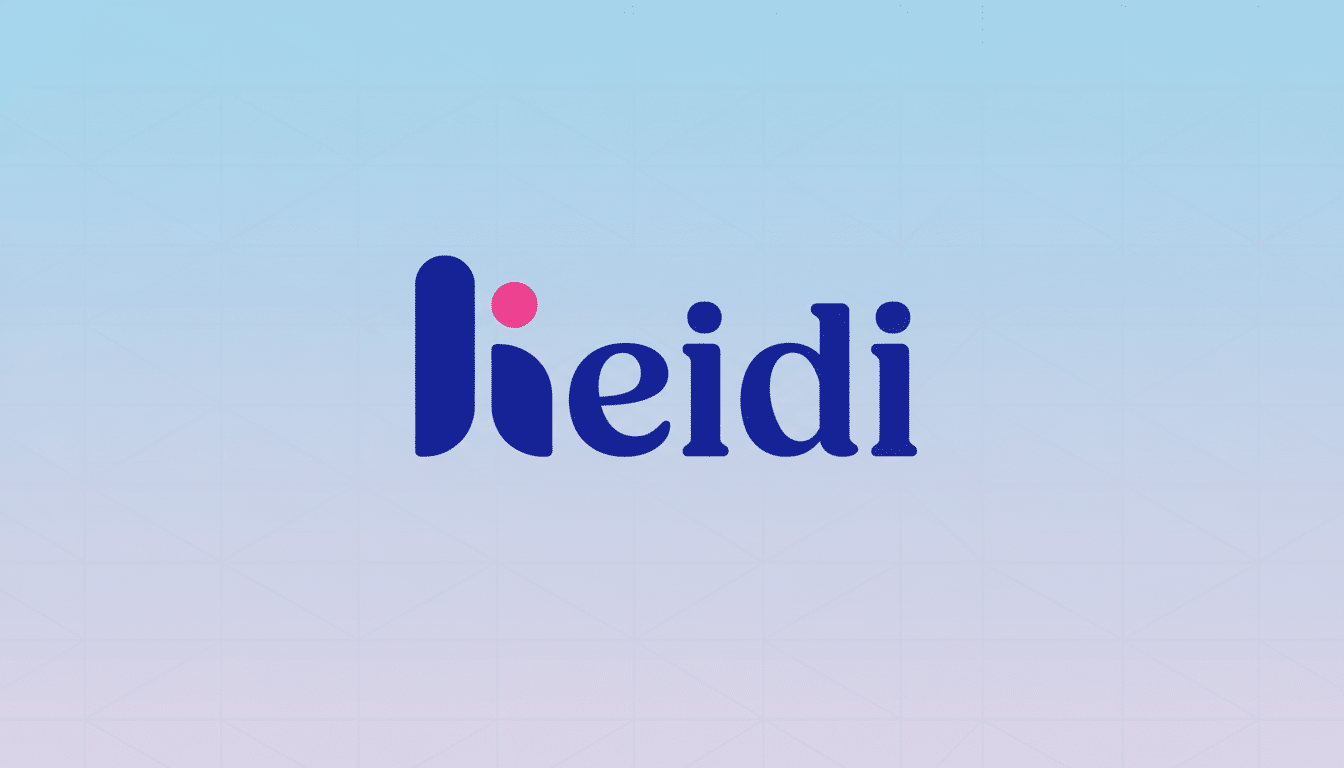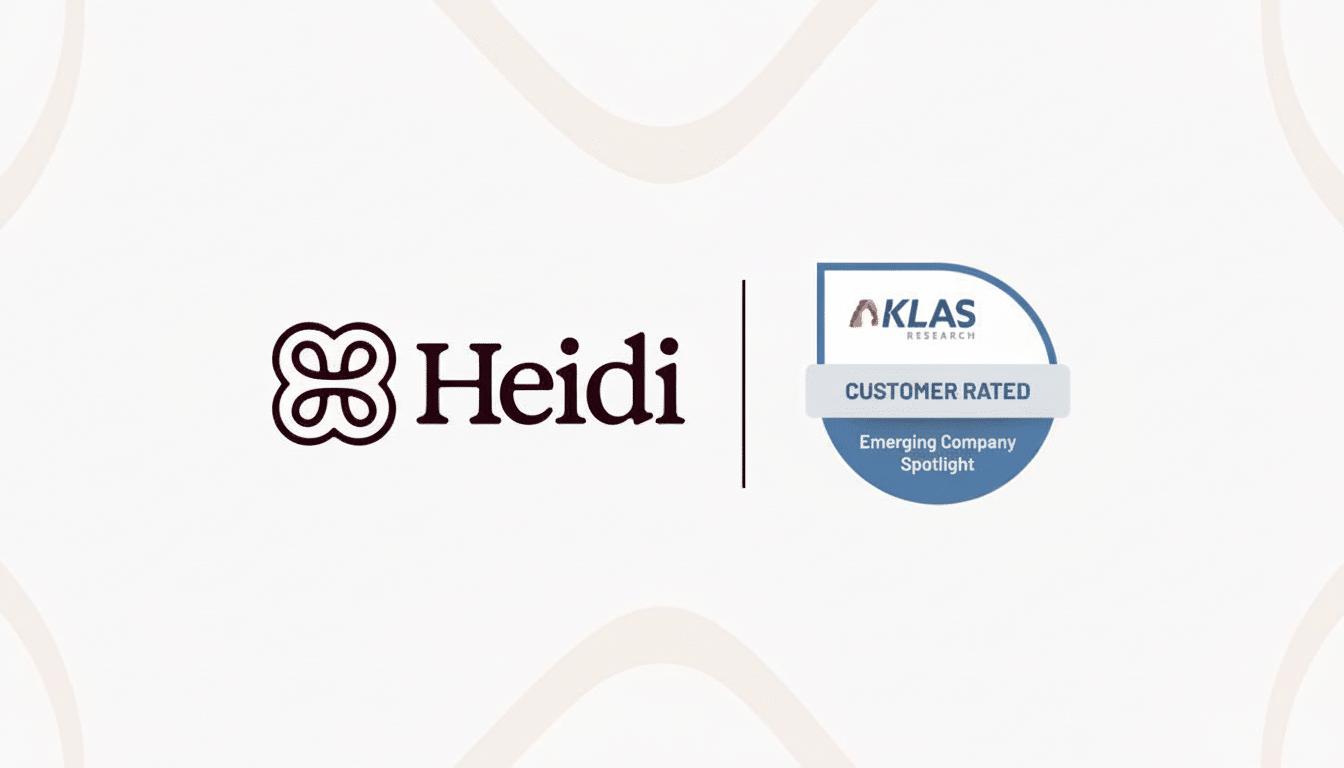Heidi Health, a startup deploying artificial intelligence to steer doctors away from paperwork so they can spend more time with patients, has raised $65 million in Series B funding led by Point72, the personal investment firm of Steve Cohen. The round, which brings the company’s total funding to $96.6 million, comes with new product capabilities and senior hires as it continues its efforts to speed adoption of the technology within hospitals and clinics around the world.
Point72 Leads Growth Round for Heidi Health’s Series B
The investment was led by Point72 and joined by Goodwater Capital, Headline, Blackbird, LG Technology Ventures and Alumni Ventures, according to the company.

While it’s unclear where Heidi Health plans to invest the fresh cash infusion, the capital will be used toward product development, scaling infrastructure and growing its sales team as healthcare systems ramp up spending on ambient documentation and clinical AI.
Heidi Health also unveiled strategic hires: former Microsoft chief medical officer Dr. Simon Kos and Plaid revenue leader Paul Williamson will join the team to steer clinical strategy and commercial execution. The combination of clinical leadership and fintech-style growth chops implies an audacious pitch to serve both enterprise deployments as well as bottom-up adoption.
AI Scribe Uses Model-Agnostic Design for Flexibility
Founded by trauma surgeon and healthcare operator Waleed Mussa, Heidi Health offers an AI medical scribe that captures conversations, structures notes, drafts patient summaries, and tracks follow-up tasks. The platform combines company-owned models with large language models, such as Gemini-class models, to optimize for accuracy, latency and cost across different specialties and encounter types.
The company claims its products have given back more than 18 million hours to frontline providers through more than 70 million patient visits in 116 countries during the past 18 months. Heidi Health claims to serve over 2 million clinical users weekly, ranging from hospital networks to solo practices. A second capability enables it to place outbound calls to have clinicians follow up with patients or remind them of an upcoming visit, aiming to minimize no-shows and fill the care gap.
Development for real-world use in health care comes with serious guardrails. Buyers will demand HIPAA compliance, strong consent workflows, full audit trails for every line of text that the model creates, and fine-grained controls to address hallucinations. HL7 or FHIR-level integration with electronic health records—most commonly Epic and Oracle Health—continues to be a requirement for scale. Health models will be held to this checklist when health systems are evaluating vendors.

Rising Demand Driven by Clinical Documentation Burden
The need of clinicians for ambient documentation is on the rise, as administrative burden erodes productivity and morale. Annals of Internal Medicine shows that physicians are, on average, spending nearly half their workday on electronic health records (EHRs) and desk work, compared to 27% of their time providing direct clinical face time with patients. Meanwhile, the American Medical Association has identified documentation burden as the top driver of burnout. KLAS Research notes the rapid adoption of AI scribing by big health systems, describing it as “one of the most happening segments” in clinical AI.
Labor shortfalls make the productivity gains all the more imperative. The Association of American Medical Colleges predicts tens of thousands too few U.S. doctors by the end of the next decade, and the World Health Organization estimates there will be a shortage of 10 million health workers worldwide in 2030, particularly in low- and lower-middle-income countries. And any broadly adoptable technology that safely compresses documentation time and expands the reach of clinicians has outsized leverage on access and outcomes.
Competition is fierce. Abridge, Ambience Healthcare and DeepScribe are also competing for share with offerings that are closely associated with big platforms, like Nuance’s DAX Copilot. The differentiators: a model-agnostic system. Heidi Health has a geographically expansive offering that allows for both a freemium entry point with sophisticated paid features—an on-ramp that’ll seed bottom-up adoption as enterprise sales move on.
How Heidi Health Plans to Use the New Funding
And now that it has new capital, Heidi Health plans to extend its specialty-specific workflows and expand support for various languages, as well as hardening enterprise controls such as role-based access and on-prem or virtual private cloud deployment options. Anticipate more-sophisticated ambulatory care capture across telehealth and in-person visits, tightened EHR write-back and task automation that goes beyond the note to scheduling, orders and prior-authorization prep.
The company’s product vision reaches beyond documentation. By delegating grunt work and normalizing clinical notes, Heidi Health says it can lead to increased throughput and continuity of care in resource-strapped settings. If the adoption metrics they cite turn into continued, high-quality output at scale, perhaps the firm becomes not a nice-to-have bolt-on utility to the clinician’s workday, but rather a default tool in her daily workflow.
For investors, the bet is that ambient AI goes from pilot to platform. For doctors, the test is simpler: fewer clicks, cleaner notes and more minutes with patients. This round gives Heidi Health the footing to show it can deliver on all three.

